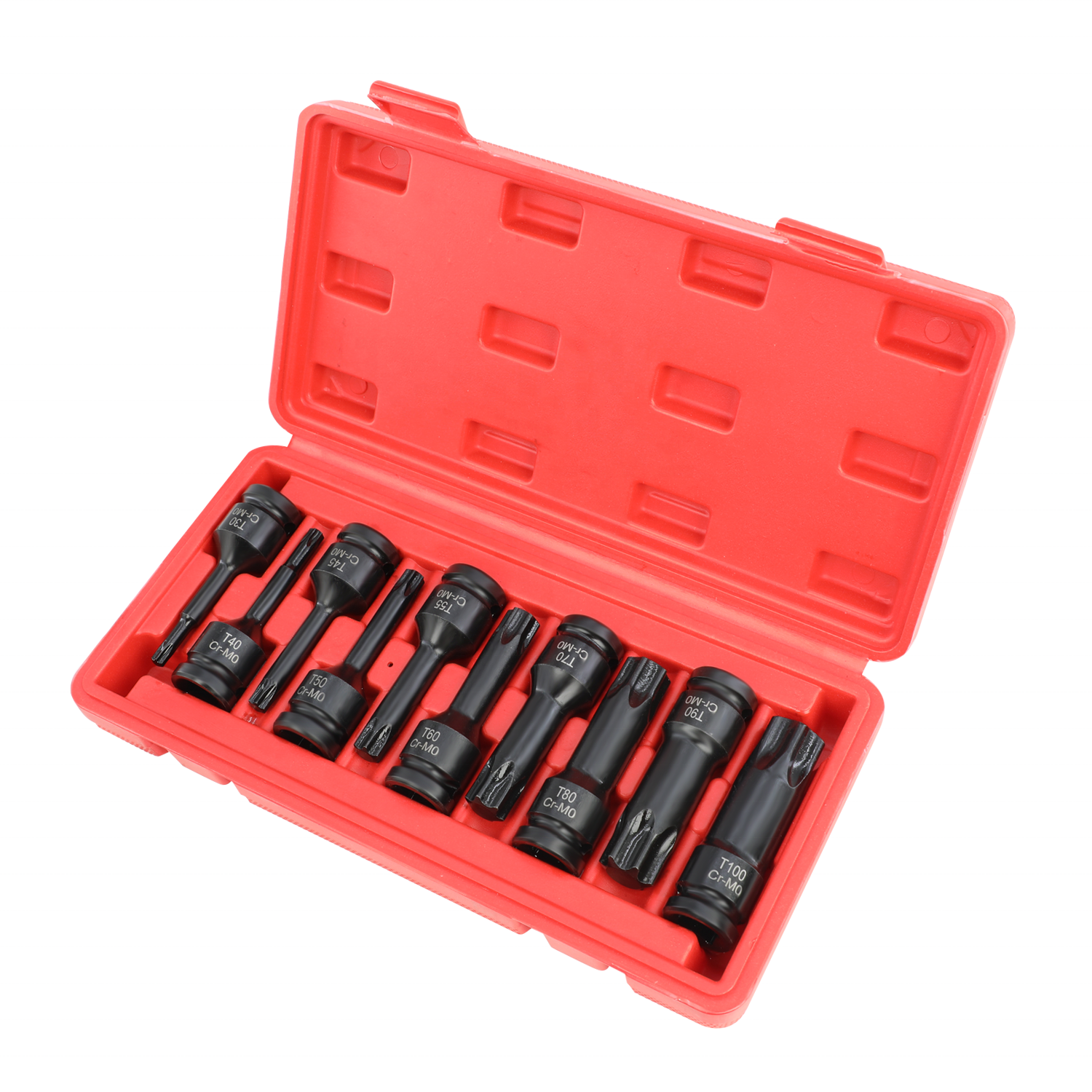Wheel studs are the linchpins of vehicle safety, securing wheels to hubs under immense stress. Yet, improper installation—over-tightening or uneven torque—can stretch threads, crack hubs, or even lead to wheel detachment. Traditional impact wrenches lack precision, but HTL’s torque-limiting models combine power with smart control, ensuring every lug nut meets OEM specs without guesswork.
Over-tightening wheel studs doesn’t just risk immediate damage; it creates long-term failures:
Thread galling: Excessive force strips threads, requiring hub replacement.
Warped brake rotors: Uneven lug nut torque distorts rotor surfaces, causing pulsation.
Stress fractures: Stretched studs snap under load, risking catastrophic wheel loss.
Common Causes of Over-Torquing:
High-power impact wrenches without torque control.
Inexperienced technicians relying on “feel.”
Corroded or cross-threaded studs increasing resistance.

HTL’s tools are engineered to eliminate installation errors:
Smart torque presets: Program OEM specs (e.g., 90–120 ft-lbs) for automatic shut-off.
Angle monitoring: Ensures even tightening in a star pattern via built-in angle sensors.
Brushless motor: Delivers 1,200 ft-lbs of breakaway torque without overpowering studs.
Bluetooth connectivity: Syncs with shop management software for compliance logs.

1. Prepare the Hub
Clean stud threads with a wire brush to remove rust or debris.
Apply anti-seize lubricant (if OEM recommends) to prevent galling.
2. Set Torque Limits
Input the vehicle’s torque specs into HTL’s wrench (e.g., 100 ft-lbs for passenger cars).
Attach the correct socket (e.g., 19 mm for most lug nuts).
3. Tighten in Stages
Hand-thread lug nuts to avoid cross-threading.
Use HTL’s 3-stage mode:
Stage 1: 30 ft-lbs to seat the wheel.
Stage 2: 70 ft-lbs to partially tighten.
Stage 3: 100 ft-lbs final torque with angle verification.
4. Validate with a Torque Stick
For added safety, use HTL’s color-coded torque sticks as a backup limiter.
Recheck 1–2 lug nuts per wheel with a manual torque wrench.
5. Post-Installation Check
Inspect for even wheel-to-hub contact.
Road-test the vehicle to detect vibrations or noises.
| Factor | Standard Impact Wrench | HTL Torque-Limiting Wrench |
|---|---|---|
| Torque Accuracy | ±20% (unreliable) | ±3% (certified calibration) |
| Thread Damage Risk | High (uncontrolled force) | Near-zero (smart shut-off) |
| Installation Speed | Fast but risky | Fast + precise (no rework) |
| Data Tracking | None | Digital logs for warranty compliance |
Skipping hand-threading: Power tools can cross-thread instantly.
Ignoring corrosion: Dirty threads increase friction, fooling torque sensors.
Using mismatched sockets: Ill-fitting sockets round off lug nuts.
Safety compliance: Meet NHTSA and OEM torque standards effortlessly.
Cost savings: Avoid $500+ hub replacements per stripped stud.
Reputation boost: Build trust through consistent, reliable service.
Wheel stud installation isn’t just about tightening nuts—it’s about safeguarding lives. HTL’s torque-limiting wrenches deliver the precision shops need to prevent failures, reduce liability, and keep customers rolling safely.
Upgrade your shop with HTL’s smart impact wrenches. Explore our torque tool bundles today!
Q: Can HTL wrenches handle truck lug nuts (e.g., 150+ ft-lbs)?
A: Yes—models range up to 250 ft-lbs for heavy-duty applications.
Q: How often should torque wrenches be calibrated?
A: Annually, or after 50,000 cycles. HTL offers free calibration with purchase.
Q: Do these wrenches work on alloy wheels?
A: Absolutely—use HTL’s nylon-coated sockets to prevent scratches.
With HTL’s tools, every wheel installation is a promise of safety and precision. 🚗🔧🔩
